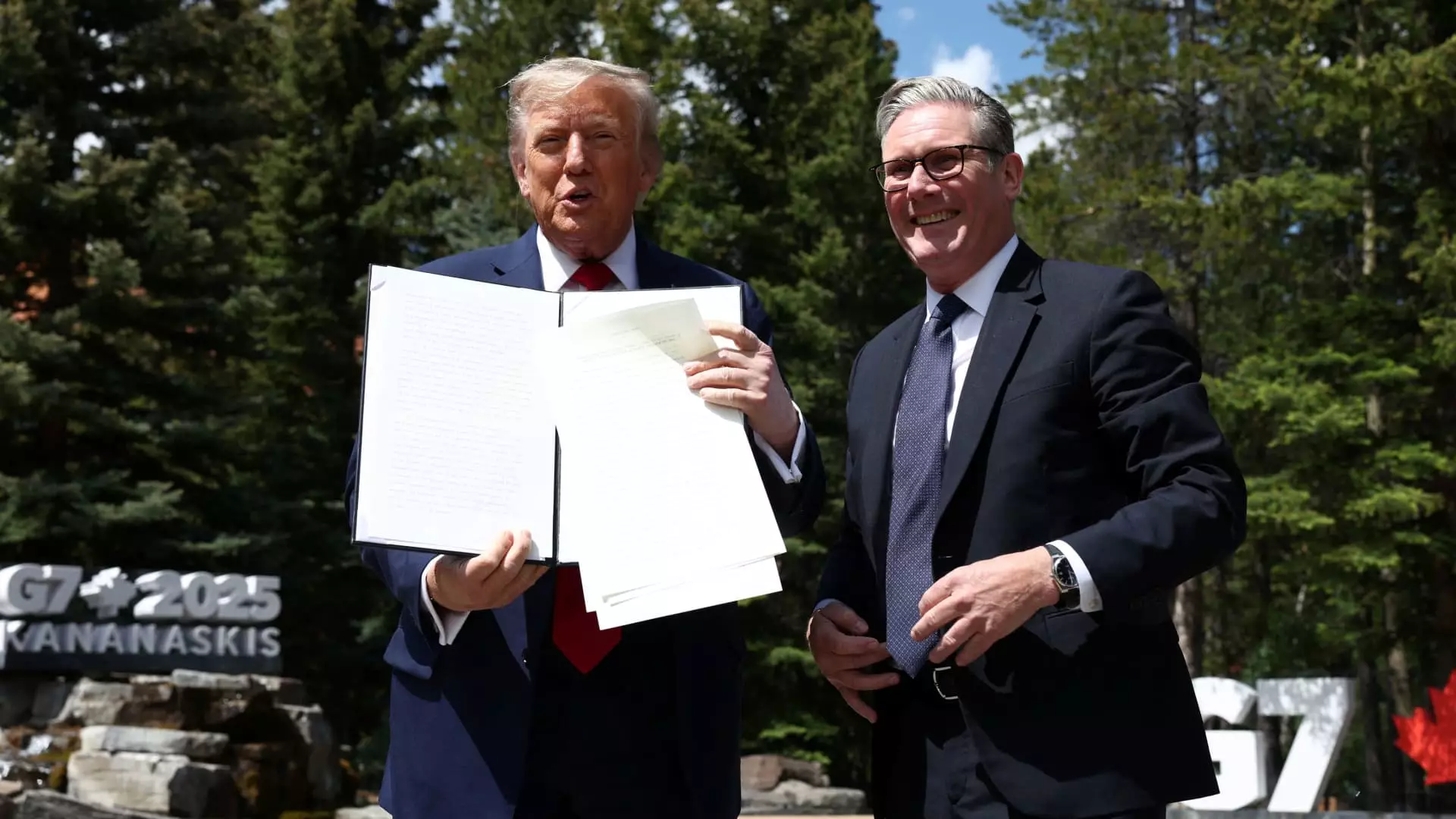In recent months, President Donald Trump’s aggressive trade policies have been framed by his administration as assertive wins that safeguard American interests. Yet, beneath this veneer of tactical gain lies an uncomfortable truth: the entire strategy is riddled with fundamental flaws that threaten long-term economic stability. The White House’s recent signings of trade agreements are not the definitive victories they’re portrayed as; rather, they are fragile improvisations built on shaky legal and diplomatic ground. The illusion of victory masks the reality that the core issues remain unresolved, leaving the U.S. exposed to unpredictable fallout in global markets and diplomatic relations. The administration’s narrative that these deals will usher in stability is naïve—stability in trade policy remains elusive, and America’s economic future is far from secured.
Legal and Constitutional Fragility
A primary vulnerability in Trump’s trade strategy is the shaky legal footing on which it largely rests. The president’s broad application of tariffs under the International Emergency Economic Powers Act (IEEPA) has faced stiff judicial resistance. Courts have expressed skepticism and even outright doubts about whether these tariffs unequivocally fall within the law’s scope. This legal challenge is more than just procedural; it’s existential. If courts eventually determine that the president has overstepped constitutional bounds, the entire framework supporting these tariffs—and the agreements built upon them—could evaporate overnight. Such a ruling would nullify months of negotiations, sending markets into chaos and undermining America’s credibility as a responsible trading partner. Relying on a legal gambit that might be struck down demonstrates a reckless underestimation of constitutional checks and balances.
Uncertainty and Lack of Transparency
Another glaring issue is the opaque and incomplete nature of the trade deals negotiated thus far. The absence of specific details from the U.S. side fuels uncertainty among international partners. Countries like Japan, South Korea, Indonesia, and the Philippines have signaled disagreements or confusion over the terms—signs that these agreements are more rhetorical than real. When negotiations are shrouded in ambiguity and not rooted in concrete commitments, the chances of these deals falling apart increase exponentially. It’s no exaggeration to say that some agreements resemble fragile paper promises that could be easily torn up when faced with diplomatic or legal challenges. This inherently unstable foundation does little to foster genuine economic growth or trust.
The Twisted Incentives of Political Negotiation
A troubling aspect of Trump’s trade policy is the reliance on a “fire-and-retry” approach—a strategy of striking deals with the hope they will hold long enough for political optics. The European Union, for instance, is portrayed as having reached an agreement, but the immediate backlash highlights how political expediency often undermines substantive negotiations. Policymakers are under immense pressure to appear tough on trade, leading to hasty agreements that may lack thorough vetting. The case of the EU, with its criticisms of imbalance, exemplifies how these deals could be more propaganda than policy. The risk is that the administration’s short-term gains are achieved at the expense of long-term strategic stability, leaving American industries vulnerable to subsequent reversals or renegotiations.
The Unresolved Tensions with Major Powers
The absence of finalized agreements with economic giants like China, Canada, and Mexico underscores the precariousness of Trump’s trade diplomacy. While a 90-day delay on additional tariffs hints at ongoing negotiations, it also signals uncertainty. The unpredictability surrounding the upcoming U.S.-China discussions injects volatility into markets that may already be strained by tariffs’ collateral damage. Moreover, each country navigates these negotiations with its own domestic interests, often resulting in diplomatic deadlocks or superficial compromises. The risk here is that unresolved disputes simmer beneath the surface, ready to explode into economic or diplomatic crises once the political window closes or domestic pressures mount.
The Market’s Illusory Confidence
The stock market’s surge to record highs amidst escalating tariffs is a paradox that reflects widespread optimism—yet, it’s a mirage. Market insiders and analysts like Laperriere warn that this confidence is overly optimistic, dangerously disconnected from the economic realities on the ground. The idea that a 1% GDP hit from tariffs is manageable ignores the uneven impacts across sectors, especially manufacturing and agriculture, which often bear the brunt. The assumption that the broader economy can smooth out these shocks is far too sanguine. Meanwhile, markets have been pricing out recession risks, perhaps prematurely, creating a false sense of invulnerability. If tariffs become more entrenched or legal challenges destabilize trade agreements, the markets could rapidly turn, exposing flaws in the so-called “win-win” narrative.
The Trump Factor: A Wild Card of Unpredictability
Perhaps the most dangerous flaw in this entire approach is the unpredictable nature of the leadership itself. President Trump’s tendency to shift policy direction with little warning hampers any coherent long-term strategy. Today’s deal might vanish tomorrow if Trump changes his mind or is outmaneuvered diplomatically. This capriciousness discourages stable investment and undermines America’s credibility abroad. The lack of a clear, consistent trade doctrine means that foreign nations cannot reliably plan around U.S. commitments, increasing the likelihood of backroom deals or abrupt U-turns. The administration’s overconfidence in the president’s personal brand of negotiation and unpredictability neglects the fact that such elements can destabilize, rather than reinforce, America’s trade position.
The Price of Overconfidence in a Political Game
In essence, Trump’s trade policy is a high-stakes gamble rooted in bravado rather than strategic foresight. By focusing on symbolic wins and aggressive rhetoric, the administration risks overlooking the deeper, systemic issues that underpin global trade. The belief that tariffs and quick deals will shield the U.S. from economic downturns is misguided; it’s a form of economic hubris that ignores the complex web of international relationships. For all the bravado, the increasingly uncertain legal, diplomatic, and economic landscape suggests that America might be playing a dangerous game—one where the costs could far outweigh the fleeting advantages of a temporary trade advantage. The core flaw is this: in trying to outmuscle global partners through bluster and tariffs, the U.S. risks undermining the very foundations of free enterprise and international cooperation that have underpinned its prosperity for decades.

